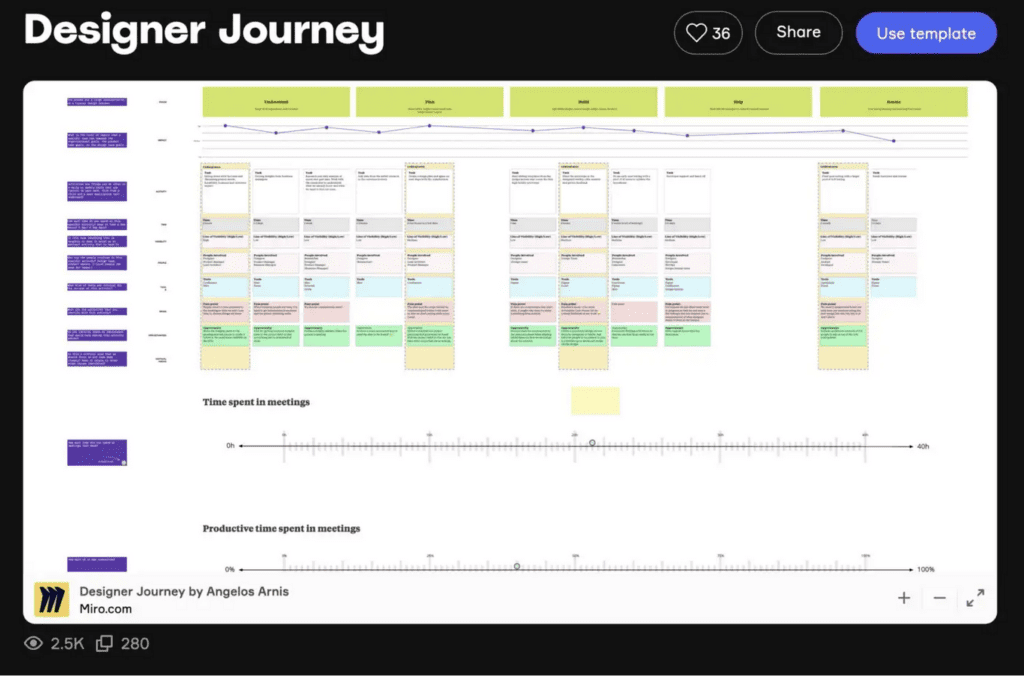
Recently I got to think a bit about design and leadership. I mean, to be totally honest I think a lot about design and leadership… But recently I needed to crystalize some thoughts around the subject and in order to do that I decided to make it an article, as it often helps me learn, reflect, and clarify. So in this article I aim to share 5 important responsibilities of design leadership that people can perform in their professional careers. These responsibilities are not listed in a specific order of importance. However, they are all crucial in their own way to make designers better leaders.
How can we help you solve your challenges?
Be the glue
Being the glue is a horizontal responsibility. Understanding the need for cross-functional alignment, knowing how to bring people together, and how to represent the needs of your coworkers is something that will establish you as a key person and someone that people can rely on to move things forward. This responsibility often requires translation from design language to business outcomes, and from business outcomes to actual design work and validation.
This responsibility requires rigorous relationship-building and emotional intelligence. Trust between people of the same company, regardless of levels in the org chart (example: execs & experts) should come by default. But there should be still data and documentation to back up the fact that the teams are performing well.
Champion the change
Championing the change is an upwards responsibility, towards the executives. Design and change are inextricably connected as Alison Rand once shared in a talk called “Mutualism” back in Clarity 2020. The responsibility of a leader in a team is not to take credit for all the good work, but to be the platform that supports and uplifts everyone else. It is about externalizing the wins and making sure that the work that teams are doing is visible, measurable, and accounted for. Design can also be seen as an enabler where design can help executives visualize strategic priorities and create concepts that can be validated as hypotheses without major investments upfront.
For design teams to be change agents in a product team, they need to be integrated and equal partners to engineering and business. Working closely with cross-functional partners to ensure models of decision-making that take this into account is in the best interest of everyone.
Hint: This work becomes easier once you have set up good relationships with your cross-functional partners and stakeholders (being the glue).

Design the designer journey
Knowing how designers are working within their teams is key to understanding their work. This is a responsibility that is facing downwards towards the design teams. Building a tight-knit design team, and a good culture is a very hard task. This is about not only understanding the journey of a designer inside a company, but also going deep into the specifics of how design is viewed and understood from different cross-functional stakeholders, and how designers are working with those stakeholders on a day-to-day basis.
Examples that are ingredients of a good team:
- A fair interview processes
- Onboarding a new designer to the team
- Career support and growth, establishing clear ladders for designers to amplify their best selves
- Goal setting, knowing in which ways the team will succeed
- Critiques, being intentional about what kind of quality gates we are setting for the work
- Offboarding, and learning from employees who leave for another opportunity (and why), but also passing the knowledge to the rest of the team
This work can be seen as establishing a DesignOps mindset. A team does not have to have an assigned role for a DesignOps Lead or Manager to get into these subjects, however, it is more likely that if this kind of work is needed, it will take away from actual design time. It is in the best interest of a team to assign a DesignOps role to a person, even if that means that it is going to be a partial engagement. Documentation is key here. Mapping the designer journey, the processes, the rituals, and the practices for your teams can help you visualize and understand the current state of things, but also identify key areas that are having major pain points and turn them into opportunities for things to be fixed.
No team can operate effectively without trust
Foster a safe environment
Fostering a safe environment is a key responsibility that affects the whole organization. As I mentioned already, part of the work is ensuring that trust is present throughout the whole organization. If trust between coworkers is not default, then the environment in which teams operate is not safe. No team can operate effectively without trust. How might we foster a safe environment?
Never be too busy for their team whenever they really need support. Always listen to what people tell you even though their problems might sound “small” to you. Promote a healthy work-life banance by establishing clear boundaries of where work begins and ends helps people to not burn out, especially during the pandemic.
Train the organization, something that should happen for executives but also experts. Train your executives in the ability to take feedback and perspectives from multiple experts regardless of their position. Likewise, train your experts in being vulnerable, and speaking out on subjects that are important to them, and during decision making processes.
Document the good examples to help teams navigate and build stronger safety within them. Measure and ask anonymously in teams on their confidence levels of psychological safety (an example question by Google: “How confident are you that you won’t receive retaliation or criticism if you admit an error or make a mistake?”). Make all these traits a habit — baked in the DNA of the organization.
A safe environment is not a micro-climate that sits between you and your peers. A safe environment is an organizational mechanism, and in a way it is a strategy that boosts performance. Diverse teams feel less comfortable — and that’s why they perform better. Peoples voices, when heard equally, they bring multiple perspectives. A safe and diverse environment in fact is a problem solving mechanism. And in that, processes also play a big role, by making them visual and by practicing them constantly.
- How are teams taking decisions?
- How do our team handles feedback?
- How does the whole organization handle conflict?
- How diverse are the teams, and by extension, the whole organization?
These are very hard discussions however they need to happen in order to be able to foster a safe environment.
Do the design
Lastly let’s talk about designing. It is important to stay in touch with the actual design of things to keep you connected to your people. It does not necessarily mean that a design leader has to go deep into pixel-pushing on a day-to-day basis, however, helping the product direction with actions, and leading the teams with examples adds value to your ways of working.
Leading design means less time to do the actual design, however keeping engaged with the work and being present often to at least support the team when they need it (as opposed to micromanaging every little detail) will create a stronger bond with them. If a leader finds it hard to keep up being engaged with work, they should at least try to be present in customer interviews and observe what they tell you about their needs and the product.
One of the best ways to keep your team’s morale high is to connect them with customers more often. There is nothing else that comes close to feeling the impact of your work than to ground that work in the reality of what customers and user problems you’re solving.
Jehad Affoneh, Chief Design Officer @ Splunk
I hope this article was helpful. These are not the only responsibilities a design leader should have, however, they are key for leading effective design (and not only?) teams. What else would you add?
Credits: Peter Boersma, and Adam Fry-Pierce for much-needed perspective and bouncing off ideas!